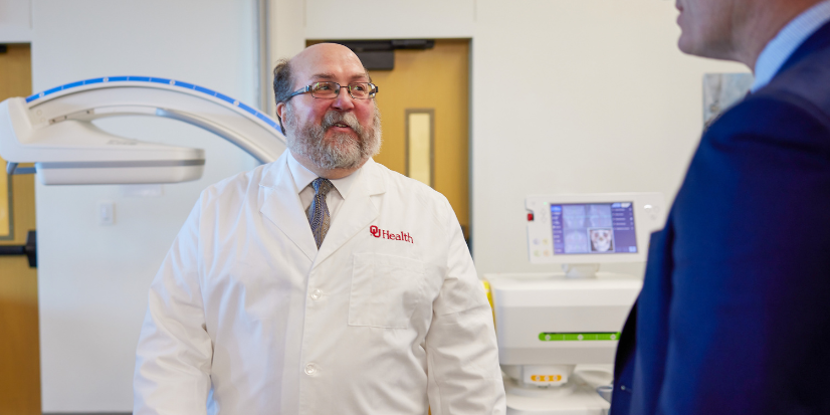RSV — Spreading the Facts

Respiratory syncytial virus (RSV), is a common infectious respiratory virus that generally causes mild symptoms, similar to a cold. While most people will recover within a couple of weeks, RSV can be serious, especially for infants and the elderly.
While anyone can get the RSV infection, it is most common in children under two-years of age and it is the number one cause of lower respiratory infections and pneumonia in those aged under one-year-old. Most children will have had RSV by the age of two and reinfection is common and may recur throughout life.
RSV is traditionally more common in winter and early spring and outbreaks generally occur annually in communities, classrooms and childcare centers.
Donna Tyungu, M.D., a pediatric infectious diseases specialist at Oklahoma Children’s Hospital OU Health, said COVID-19 pandemic and mitigation strategies used to combat the pandemic are thought to have shifted the typical RSV season, resulting in an unprecedented number of summertime cases and hospitalizations in 2021. The summer of 2022 came with another unusual increase in cases.
“As we approach the winter of 2022, we are currently experiencing an unprecedented RSV surge across the United States,” Tyungu said.
The Spread of RSV
The CDC reports that children are often exposed to RSV outside the home and can spread it to other family members. Once a person is infected with the virus they are contagious for three to eight days, but infants and people with weakened immune systems can spread RSV for weeks, even if they are not showing any symptoms.
RSV can survive on hard surfaces such as tables, chairs and cribs for many hours, but typically lives on softer surfaces for shorter periods of time.
The virus is transmitted through nose and throat secretions, usually through air particles such as coughs and sneezing. It can also be passed on by people infected with RSV who have sneezed or coughed into their hands without thoroughly washing them or using an alcohol-based-hand gel with at least 60% alcohol. The virus can be transferred this way by shaking hands or touching contaminated surfaces and then touching eyes, nose or mouth.
RSV Symptoms
Once a person has been in contact with the virus, symptoms will begin within two to five days. Early RSV symptoms include mild cold-like symptoms such as runny nose.
In children younger than 3 years old, RSV may move into the lungs and symptoms include coughing, sneezing and wheezing.
If you believe your child may have RSV, first contact your pediatrician. You can also schedule a Urgent Virtual Care visit, or take your child to Urgent Care. If breathing difficulties become severe and include any of the following symptoms, please visit the nearest emergency department:
- Fever
- Cough
- Apnea (brief interruptions in breathing)
- Difficulty swallowing which impairs eating or drinking
- Breathing difficulty — flaring of nostrils or straining of chest or stomach; taking faster breaths than normal
- Wheezing
- Lips or skin with a blue-colored tinge
If at any point you believe an emergency exists, go to the closest emergency department or call 911.
If you child is unresponsive or there is a sudden change in mental status – becomes unusually sleepy, difficult to wake, is disoriented or seems confused, seek emergency assistance.
Most at Risk
- Babies born prematurely
- Babies with any heart, lung or immune system conditions are at risk for more severe impact from the virus
You Can Stop the Spread — Wash Your Hands
Teach children to wash hands properly and often:
- Before eating or handling food
- After using the bathroom
- After playing with animals
- After coughing or sneezing
Simple tips
You can help stop the spread:
- Carry an alcohol-based hand gel containing at least 60% alcohol, if soap and water are unavailable
- Remind children not to touch eyes, nose and mouth
- Ensure children receive recommended vaccinations as appropriate for age
- Prevent dehydration - make sure child is drinking enough fluids (preferably water or electrolyte solutions)
- Make sure children get plenty of rest and eat nutritious foods
- Thoroughly clean all surfaces touched by an infectious person



